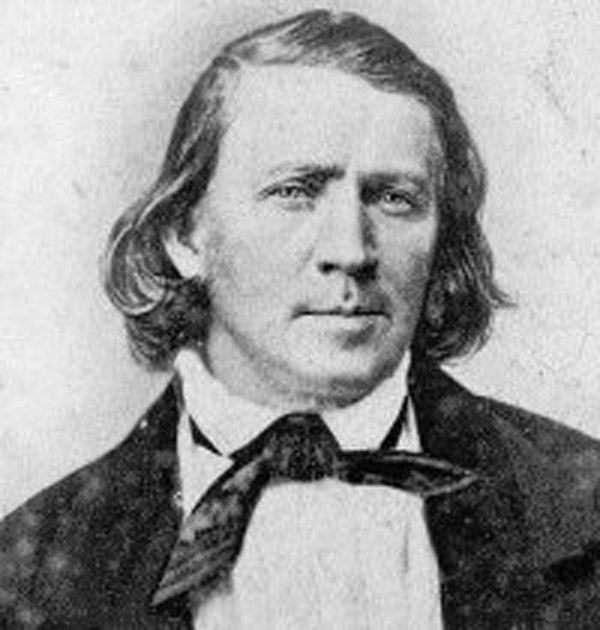
Leading Mormon Murderers Associated With The 9/11/1857 Mountain Meadows Massacre

Latter-day Church President Brigham Young
"I gave them all the cattle that had gone to Cal the south route. It made them open their eyes. They sayed that you have told us not to steal. So I have but now they have come to fight us and you for when they kill us they will kill you. They sayed they was afraid to fight the Americans and so would raise (grain) and we might fight." Diary of Dimick Huntington quoting Brigham Young on September 1, 1857 in a evening meeting with Indians chiefs Kanosh, Ammon, Youngwuds, and Tutsegabit. Blood of the Prophets, page 114.
Lee claimed he went directly "to the President's house and gave to Brigham Young a full, detailed statement of the whole affair, from first to last." Lee insisted he told Young everything, including "the names of every man who had been present at the massacre." I told him who killed the various ones," Lee said. "In fact I gave him all the information there was to give." Young replied that Haight had already sent him word "that if they had killed every man, woman and child in the outfit, there would not have been a drop of innocent blood shed by the brethren; for they were a set of murderers, robbers, and thieves." Blood of the Prophets, page 176.
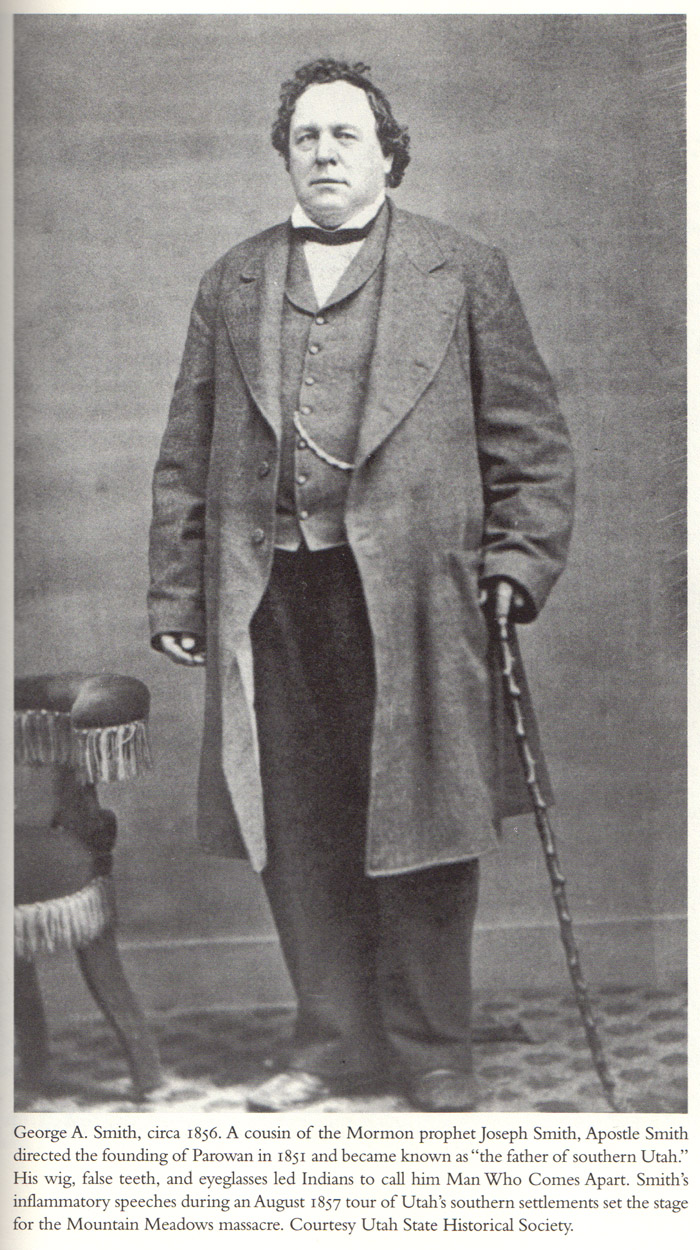
Mormon Apostle George A. Smith on an 1856 visit to Washington D.C. to promote the legitimacy of polygamy.
Late in the evening of August 25, George A. Smith and his mixed band of Mormons and Indians camped about forty yards from the campfires of the Fancher party. According to Smith's official journal, the alarmed emigrants immediately doubled their guard. Three men soon visited the Mormon camp. One introduced himself as the captain of the company and asked if the Indians camped across the creek posed any danger. Smith said he told them that "if their party had not committed any outrage upon the Indians there would be no danger." Blood of the Prophets, page 106.
In his daybook Hamblin provided a chilling glimpse into what did happen that night at Corn Creek. While camped near the "company of emigrants from Arcan Saw on thare way to California," Smith spoke of the strange atmosphere surrounding the travelers. He believed some evil "would befall them before they got through." Blood of the Prophets, page 110.
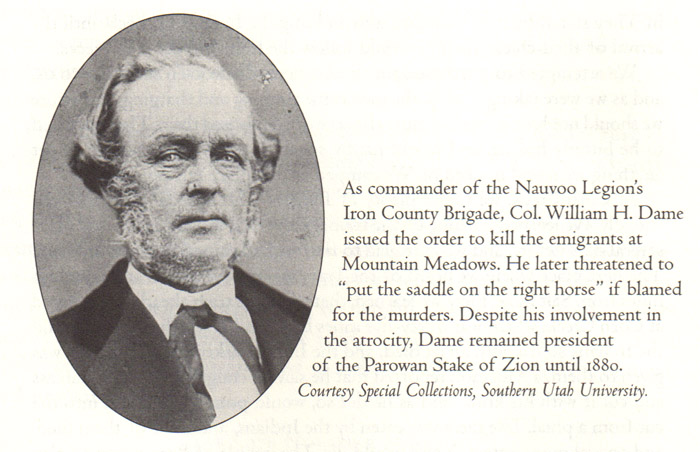
Colonel William H. Dame - Commander of the Nauvoo Legion Iron County Brigade
Persistent traditions tell that the fate of the emigrants was decided at a meeting at "Dame's wood pile." Colonel Dame's disposition of his forces in early September suggests the meeting planned not just the massacre of the Fancher train but also the destruction of every emigrant party on the southern road. As John Hawley observed, the general sentiment in the southern Mormon settlements that September was that "all that came in the Territory must be cut off." Blood of the Prophets, page 115.
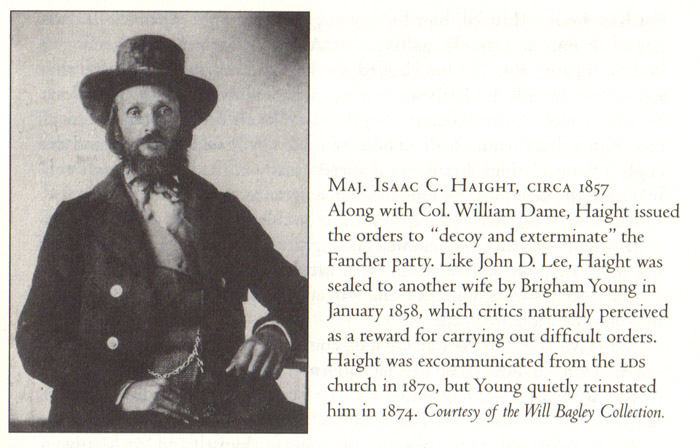
Major Isaac C. Haight of the Nauvoo Legion
Following a council at Cedar City, Haight, Higbee, and Lee appointed a large number of men to "perform the work of dispatching these emigrants." The men were ordered to report well armed at a set time in the hills near Hamblin's ranch. Here they "painted and otherwise disguised themselves so as to resemble Indians." Blood of the Prophets, page 120.
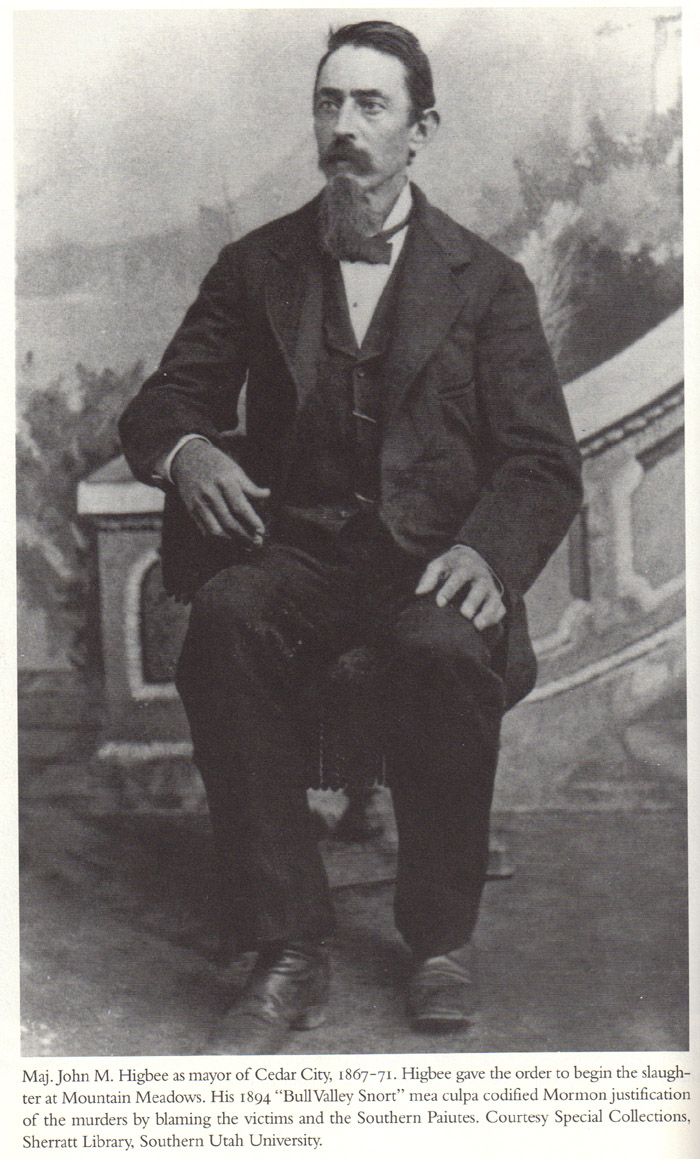
Major John M. Higbee of the Nauvoo Legion
Haight received Lee's call for help by Monday afternoon, and according to Higbee, a dozen or more "honorable good citizens" volunteered to go to the meadows. The five trips Higbee recalled making between Mountain Meadows and Cedar City would have totaled 185 miles, suggesting he was present at the first attack and was the man sent to report its failure. Blood of the Prophets, page 128.
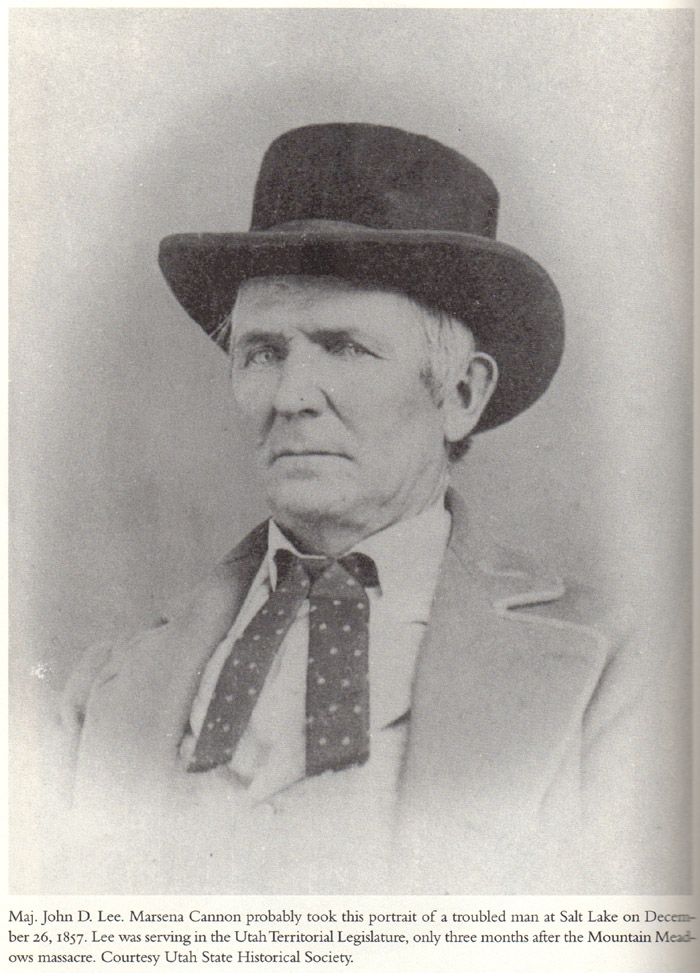
Major John D. Lee of the Nauvoo Legion
Lee described a priesthood council held Thursday evening. Higbee chaired the meeting near Abe's Spring, opening with a prayer that invoked the Holy Spirit. He handed Lee written instructions from Cedar City, which Lee later insisted he felt bound to obey as a direct military order. Haight had signed them, but he later told Lee the orders came from Colonel Dame. Higbee said the only safe course "was the utter destruction of the whole rascally lot." Higbee said everyone must be killed "except such as are too young to tell tales, and if the Indians cannot do it without help, the Mormons must help them." Blood of the Prophets, page 141.
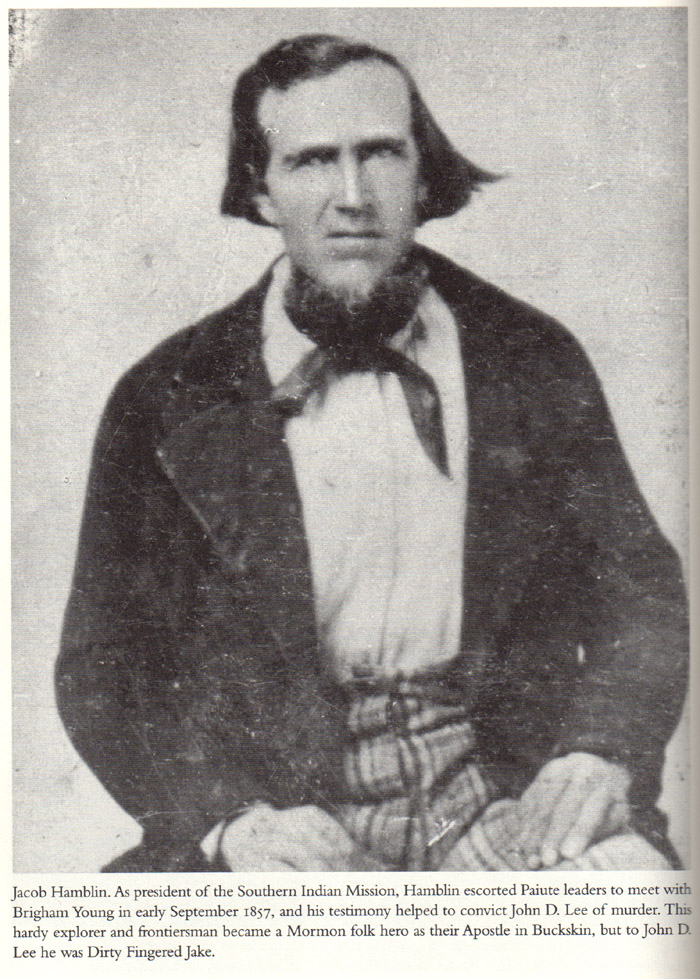
Jacob Hamblin - President of the Southern Indian Mission
Jacob Hamblin said one of the men in the Fancher party told him the company "was made up near Salt Lake City of several trains that had crossed the plains separately." Being Southerners they perferred to take the southern route. By now aware of the bitter hostility of the Mormons, the emigrants began their journey south about August 5, 1857.
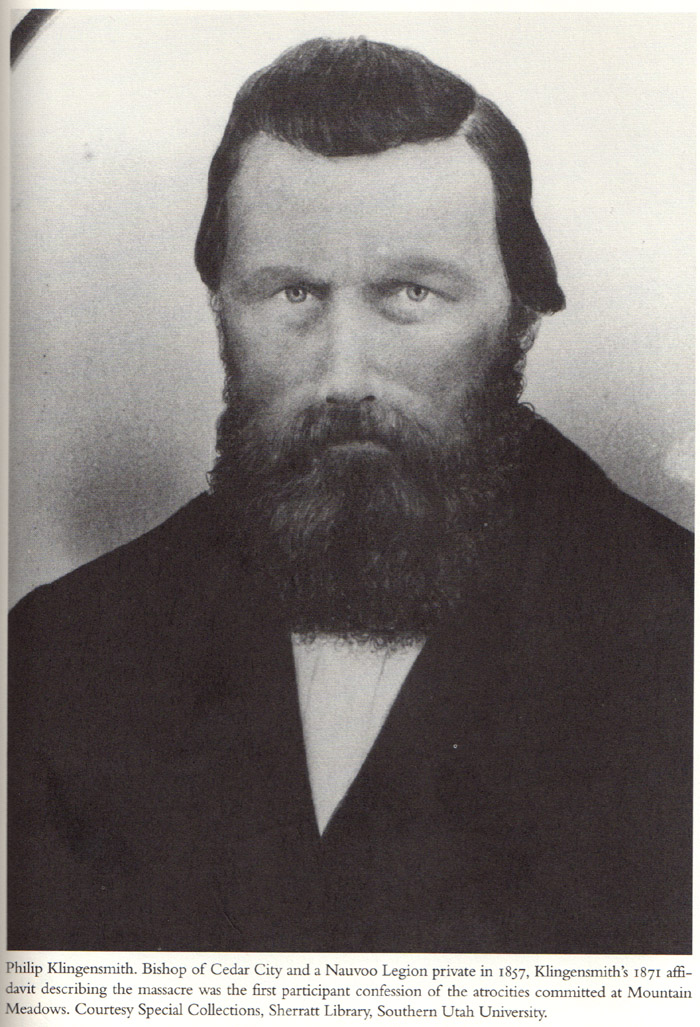
Philip Klingensmith - Mormon Bishop of Cedar City
Undisguised hostility usually greeted the Arkansans on their trek through Utah, but in Cedar City the Emigrants found a friend in miller Joseph Walker, a "sturdy and bluff old Englishman," who milled the grain they had bought at Corn Creek. Bishop Philip Klingensmith sent an elder to order the miller not to grind the wheat, but the independent-minded Walker refused to be intimidated. "Tell the bishop," he said, "I have six grown sons, and that we will sell our lives at the price of death to others before I will obey his order."
Mountain Meadows Mormon Massacre Smoking Gun Sermon - 9/13/1857
Other Mormons associated with the Mountain Meadows massacre
Brigham Young and the Massacre at Mountain Meadows
Philip Klingon Smith Confession